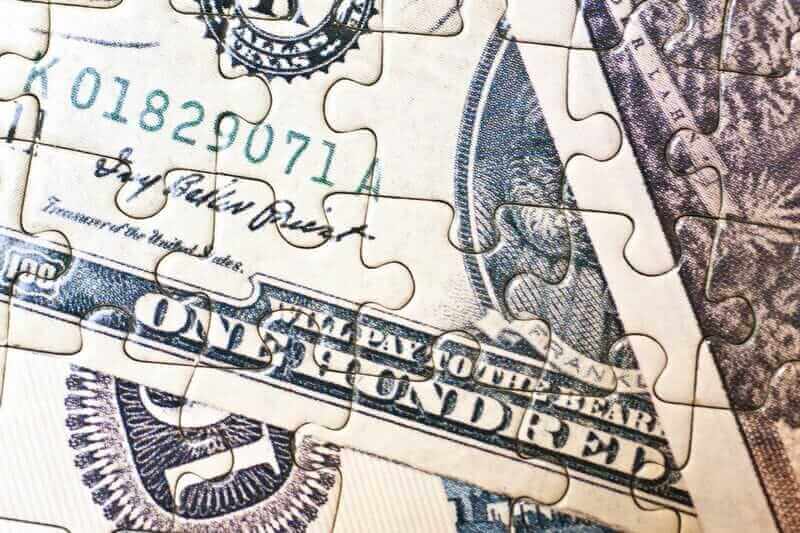
The dollar index (DXY00) on Friday fell by -0.06%. The dollar on Friday posted modest losses. Weaker than expected U.S. economic news on Aug personal spending and Sep MNI Chicago PMI weighed on the dollar. Also, dovish U.S. inflation news Friday knocked T-note yields lower and weighed on the dollar after the Aug PCE core deflator rose at the slowest pace in two years. The dollar recovered most of its losses after stocks gave up early gains and turned lower when New York Fed President Williams said the Fed may have to keep rates restrictive for “some time.”
Friday’s U.S. economic news was mostly weaker than expected and bearish for the dollar. Aug personal spending rose +0.4% m/m, weaker than expectations of +0.5% m/m. Also, the Sep MNI Chicago PMI fell -4.6 to 44.1, weaker than expectations of 47.6. In addition, the Aug PCE core deflator eased to +3.9% y/y from +4.3% y/y in July, right on expectations and the slowest pace of increase in 2 years, which is dovish for Fed policy.
On the positive side, the University of Michigan U.S. consumer sentiment was revised upward by +0.4 to 68.1, stronger than expectations of no change at 67.7.
Hawkish comments on Friday from New York Fed President Williams were supportive of the dollar when he said, "My current assessment is that we are at, or near, the peak level of the target range for the federal funds rate, though I expect we will need to maintain a restrictive stance of monetary policy for some time."
EUR/USD (^EURUSD) on Friday rose by +0.06% and found support from a weaker dollar. Gains in the euro were limited after Friday’s economic news showed Eurozone Sep consumer prices rose less than expected and German Aug retail sales unexpectedly fell by the most in 8 months, dovish factors for ECB policy. Also, dovish comments from ECB Governing Council member Kazaks weighed on the euro when he said, "Interest rates will probably remain steady for an extended period.”
Eurozone Sep CPI eased to +4.3% y/y from +5.2% y/y in Aug, better than expectations of +4.5% y/y and the slowest pace of increase in almost two years. Also, Sep core CPI eased to +4.5% y/y from +5.2% y/y in Aug, better than expectations of +4.8% y/y and the slowest pace of increase in 13 months.
German Aug retail sales unexpectedly fell -1.2% m/m, weaker than expectations of an increase of +0.5% m/m and the biggest decline in 8 months.
ECB Governing Council member Kazaks said, "Interest rates will probably remain steady for an extended period. However, if inflation doesn't go down, then there could be a small increase."
USD/JPY (^USDJPY) on Friday rose by +0.08%. The yen on Friday gave up early gains and posted modest losses. Friday’s action by the BOJ to announce an unscheduled bond-purchase operation weighed on the yen. The BOJ purchased 300 billion yen ($2 billion) of five- to 10-year bonds in an attempt to keep long-term bond yields from rising. The yen on Friday initially moved higher as T-note yields fell, and after the 10-year JGB bond yield climbed to a 10-year high of 0.774%, strengthening the yen’s interest rate differentials.
Friday’s Japanese economic news was mixed for the yen. On the positive side, Aug industrial production was unchanged m/m, stronger than expectations of -0.8% m/m. Conversely, the Japan Sep consumer confidence index fell -1.0 to a 6-month low of 35.2, weaker than expectations of no change at 36.2. Also, Aug retail sales rose +0.1% m/m, weaker than expectations of +0.4% m/m.
Japan Tokyo Sep CPI ex-fresh food and energy eased to +3.8% y/y from +4.0% y/y in Aug, better than expectations of +3.9% y/y.
October gold (GCV3) on Friday closed -12.30 (-0.66%), and Dec silver (SIZ23) closed -0.291 (-1.28%). Precious metals prices on Friday gave up an early advance and posted moderate losses, with gold falling to a 6-1/2 month low and silver falling to a 6-1/4 month low. Hawkish comments from New York Fed President Williams sparked long liquidation in metals when he said the Fed will have to maintain restrictive rates “for some time.” Long liquidation pressures also weighed on gold prices after long gold holdings in ETFs fell to a 3-1/2 year low on Thursday. Silver prices were undercut by industrial metals demand concerns after the U.S. Sep MNI Chicago PMI and German Aug retail sales fell more than expected. On the positive side was a weaker dollar and lower global bond yields.
On the date of publication, Rich Asplund did not have (either directly or indirectly) positions in any of the securities mentioned in this article. All information and data in this article is solely for informational purposes. For more information please view the Barchart Disclosure Policy here.






